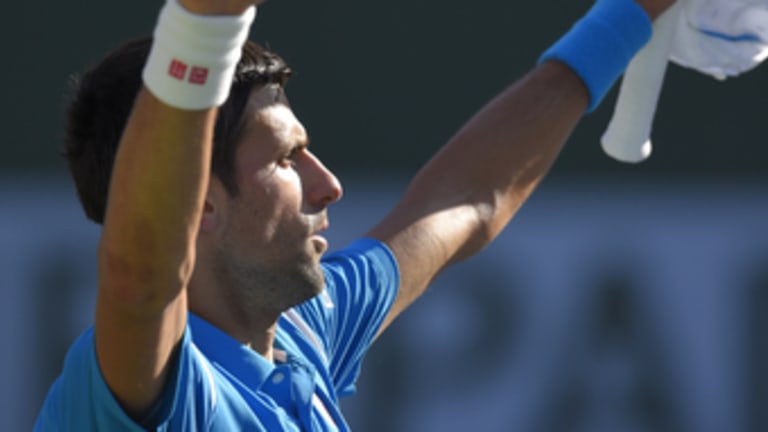Nobody would blame Djokovic for saying that the ATP should fight to increase prize money, but why specifically say that it should be more than the women make? Why not say that the whole sport should fight together to be paid more? Unfortunately, going back to 1973, that’s not how pro tennis has ever operated.
What about Djokovic’s point regarding “stats showing we have much more spectators on the men’s tennis matches?” Is it possible, at a dual-gender event like Indian Wells, to tell which player a spectator wants to see when he or she buys a ticket? Some are Roger Federer fans, others are Serena Williams fans; should we count the number of people in the bleachers at each match and award prize money to the players based on how many they drew?
Most ticket-buyers, in my opinion, come to the Grand Slams or tournaments like Indian Wells to watch tennis, to soak it up, to be surrounded by it, to wander from match to match, to be part of a huge, festive event. These tournaments are celebrations of the sport, and they wouldn’t be as much fun, or have as much impact, if the whole sport wasn’t represented. Indian Wells, not to mention the U.S. Open, wouldn’t be the same if it were single gender.
While Wimbledon is famous for champions like Federer, Pete Sampras, Boris Becker and Bjorn Borg, it’s also famous for champions like Venus and Serena Williams, Steffi Graf, Martina Navratilova and King. Each of these personalities has contributed to Wimbledon's rich history and enduring popularity. That variety is unique to tennis, and, while it has never been properly exploited, is one of its strengths.
What about TV ratings? Those can be driven by a single star of either gender, and they can vary from country to country. Over the last 15 years in the U.S., ESPN has often reported higher ratings for the women’s game, due in large part to the presence of the Williams sisters. In the U.K., ratings at Wimbledon are higher for the men, due to the presence of Andy Murray. I’m guessing, though, that when Virginia Wade was on Centre Court in the 70s, the ratings for the women—i.e., Wade—were higher than the men.
As I’ve written before, I’m in favor of equal pay at the majors, even though the men play three-out-of-five sets and the women play two-out-of-three. It’s a fact that shouldn’t be ignored; if you’re a ticket buyer and you have a choice between the men’s final or the women’s final at a major, you might choose the men simply because you’re guaranteed to see more tennis. But as I wrote above, that doesn’t mean the women contribute less to the popularity of the Slams as a whole.
In the past, there hasn’t been much talk about equal pay at the tours’ other dual-gender tournaments. The issue at these events isn't how long the matches are—men and women both play two-of-three sets—but where the money comes from. While the Slams put up their own purses, the tours are involved in contributing to the pots and setting the prize-money levels at dual-gender Masters events, and the ATP can afford to set those levels higher. Indian Wells, Miami and Madrid, two of which are owned by billionaires and the other by IMG, pay equally anyway; but the ATP offers more than the WTA in Rome, Canada and Cincinnati. Again, this goes back to the Original Split: Even when the tours travel together, they sell themselves separately.
Embed from Getty Images
